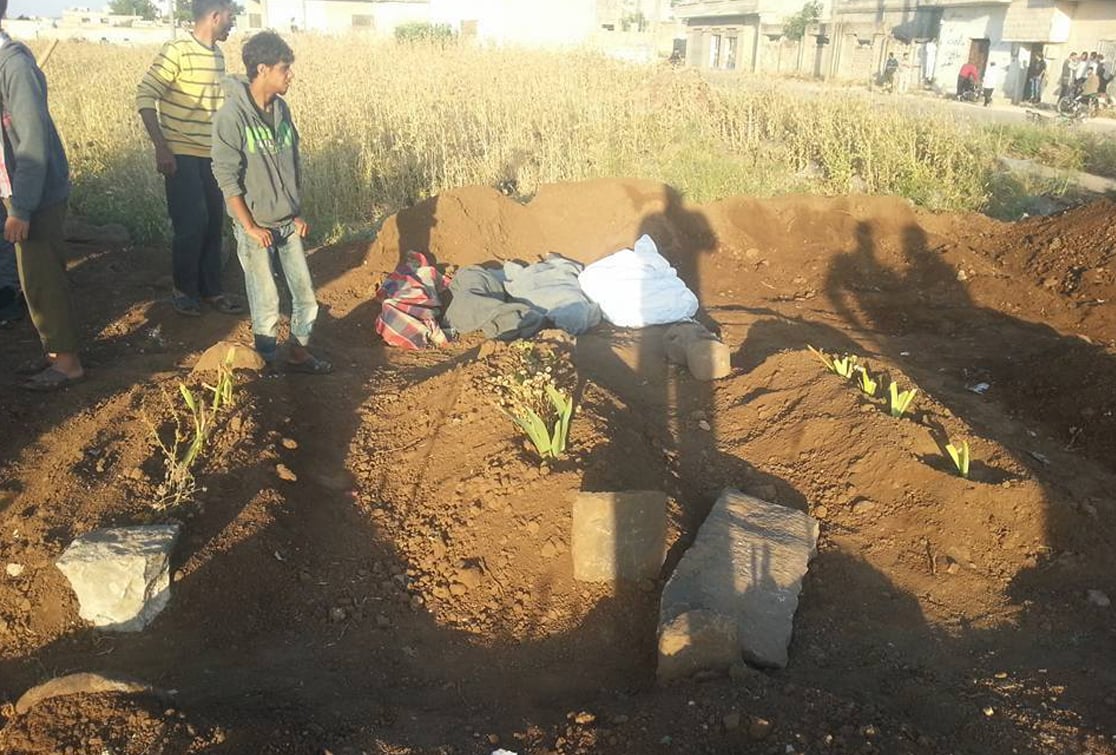Increasing number of committed massacres despite of the Cessation of Hostilities Agreement

SNHR has published its periodic report on massacres committed by the parties of conflict in Syria.
Since the commencement of the Cessation of Hostilities agreement, various Syrian governorates saw a relatively good and noticeable drop in death toll numbers, compared with the previous months since March 2011, and the main talk is about the areas under the control of the armed opposition; because the rest of the controlling areas such as those under control of the Kurdish Democratic Union Party and the control of the Syrian regime, are not exposed to the dense daily bombardment which is the main way of killing as it is responsible for 60% of the victims at least, destruction of buildings, and the displacement of its people. But in spite of all this, the violations did not stop, and mainly by the Syrian regime and its allies, which seems to be the greatest sufferer of the continuation of the cessation of hostilities.
One day after the declaration of the supreme body for negotiations to postpone their participation in the Geneva talks on 19 last April, the governmental forces and the Russian forces resumed attacking the areas beyond the control of the Syrian regime and the pace of killing returned to what it was before the Agreement on Cessation of Hostilities.
The report reviewed the outcome of the massacres of May 2016, and the term massacre was adopted at due to the event of killing five peaceful people in one batch. According to this definition, the report documented 25 massacre in May 2016, 16 of the massacre at the hands of the governmental forces, and 3 by allegedly Russian forces and 5 by ISIS, one massacre by the International Coalition forces.
According to the report, the government forces committed 5 Massacres in Idlib, 3 in Homs, and 2 in each of Aleppo, Damascus suburbs and Deir Al-Zour, and one massacre in Al Raqqa. The Russian forces have committed 1 Massacre in Idlib, and 2 in Aleppo; while the ISIS has committed 3 Massacres in Lattakia, and one massacre in each of Homs and Tartous. The International Coalition forces committed one massacre.
The report pointed out that, these massacres killed 302 individuals including 72 children and 63 women. 45% of targeted victims were women and children which is a strong indicator that civilians were targeted deliberately.
The report detailed the death toll of the massacres’ victims in May, where the number of the victims of the massacres committed by government forces is 137 people, including 46 children and 26 women. The number of the victims committed by the Russian forces has reached 646 people, including 21 children and 3 women. While the victims killed at the hands of the ISIS 131 civilians, including 11 children and 32 women. The victims committed by the international coalition forces 8 civilians, including 3 children and 2 women.
The report confirmed that the bombardment whether they were random or in purposes, were directed against members of the unarmed civilians, and therefore the government forces is violating the provisions of international human rights law which protects the right to live. In addition to its commitment in non-international armed conflict, this is considered as a war crime.
The report indicates that the bombardment operations have caused accidentally losses against the lives of civilians and causing injuries or damage to civilian targets. There are strong indications to believe that the damage was very excessive if compared to the desired military benefits. In all the cases they didn’t make sure of the existence of a military objective before or during the attack.
The report also states that the size of the massacres and the nature of the repeated massacres and the level of excessive force used in addition to its random nature, could not be but with the only high guidance by policy of the State.
The report recommended to refer the situation in Syria to the International Criminal Court, and stop the disruption of the decisions which the Council is supposed to be taken on the Syrian Government; because it sends the wrong message to all dictatorships around the world and promotes a culture of crime and also recommended that imposing sanctions on all involved in the massive violations of human rights.
The report also demanded from the Syrian government to allow all relief and human rights organizations, International Investigation Committee and reporters to enter Syria, and allowing them to work freely.
The report indicated Listing the militias that are fighting with the Syrian government and have committed massacres, like Hezbollah and the other Shiite brigades, National defense Army and Shabiha militia, on the international list of terrorist organizations.
Finally, the report called Implementing the principle of “protecting civilians” adopted by the General Assembly of the United Nations in 2005, in Syria now, as the situation there is direly requiring the implementation of such a principle. If this principle hasn’t been applied in Syria where to be applied?


